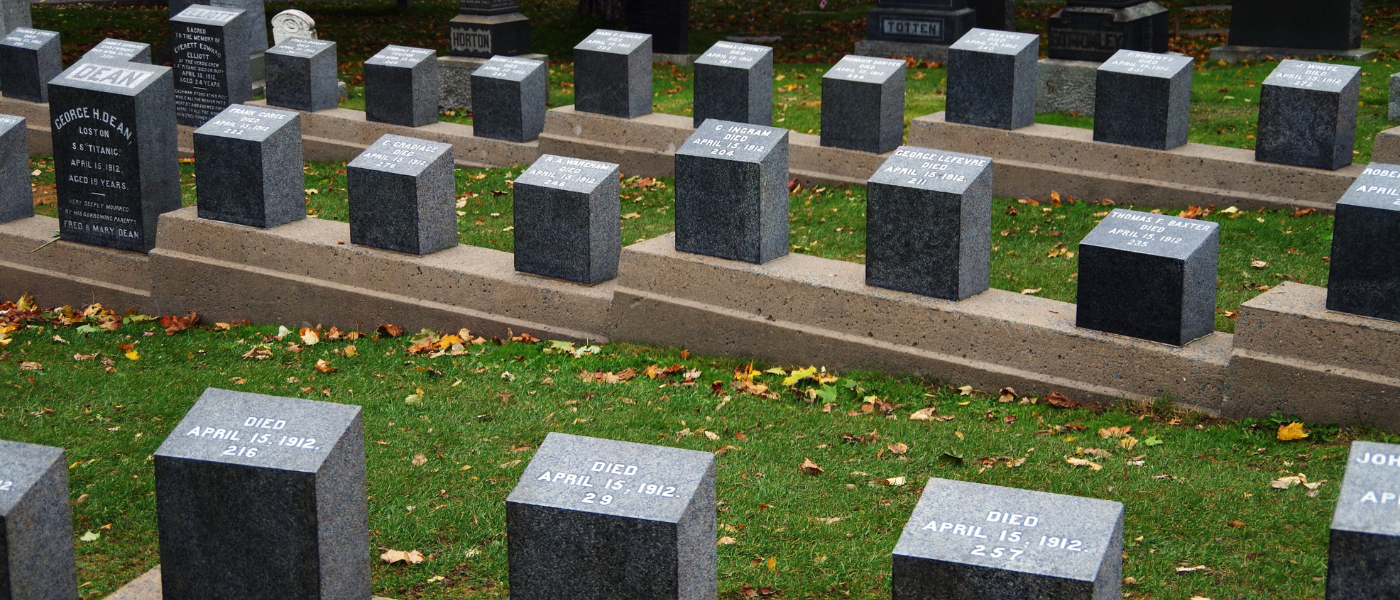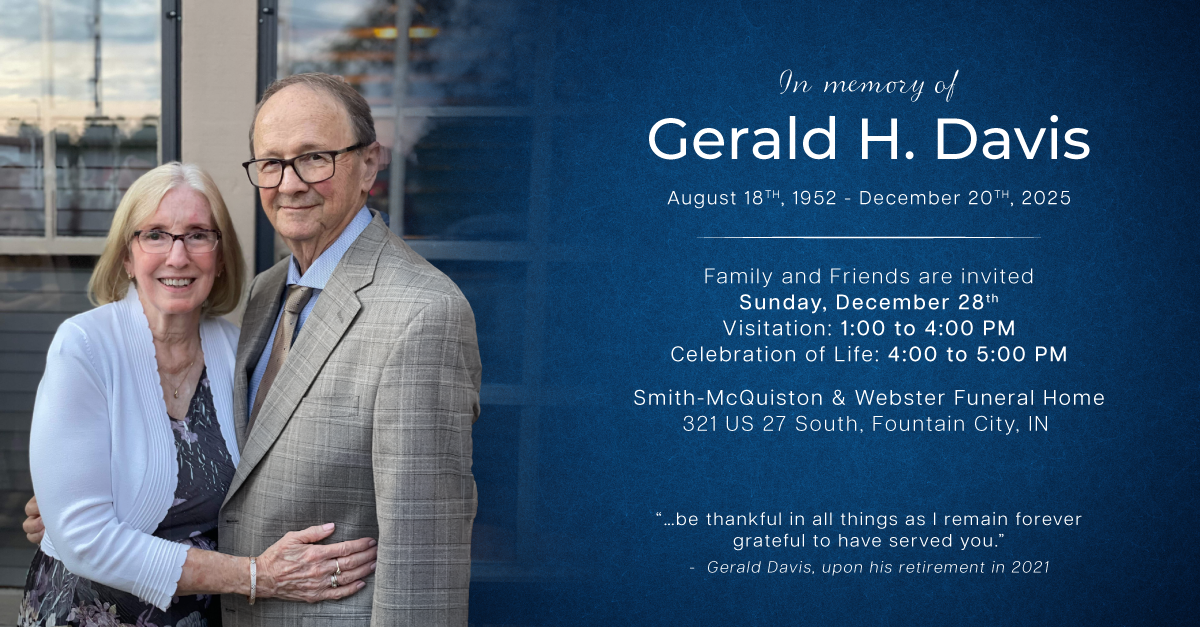112 Years Later, What Can We Learn From the Handling of the Titanic Dead?
We all know the story of the Titanic — at least the James Cameron version, if nothing else. On April 14, 1912, the supposedly unsinkable luxury liner sank into the Atlantic Ocean after hitting an iceberg, sending the majority of its 2,200 passengers to a watery grave. One-hundred-and-twelve years later, the drama of what is arguably the world’s most famous shipwreck continues to fascinate us.
Although much of the Titanic drama stems from the unimaginable loss of life that fateful night, most narratives focus on the grand lifestyles of the aristocrats who were aboard, the drastically different treatment of the third-class passengers and crew, and everyone’s struggle to survive when a lack of lifeboats and frigid conditions made that nearly impossible. Rarely do we focus on how the dead were actually retrieved, preserved, identified, and finally, returned to their loved ones for disposition. It’s a fascinating topic that can provide valuable lessons for deathcare professionals, even today.
Mass casualty events require immediate attention and adequate preparation
Too large of a share of deathcare professionals have participated in mass casualty events like plane crashes, school shootings, and of course, the events of September 11, 2001. You know that despite our deepest prayers that those things won’t happen, we must be prepared if they do.
That lesson was learned the hard way in the hours after the Titanic sank. Of the vessels alerted to the unfolding tragedy by radio signals, only one responded relatively quickly; the Carpathia arrived within an hour. Of course, their immediate focus was to rescue and treat the 700+ survivors who managed to escape in lifeboats or floating debris.
The White Star Line, which owned the Titanic, immediately sent a contracted cable-laying ship, the Mackay-Bennett, to the site for the sole purpose of recovering the deceased. This ship arrived eight days after the sinking, joining three other vessels dedicated to recovery efforts. The Mackay-Bennett was equipped with one hundred coffins, one hundred tons of ice, one embalmer, and embalming supplies, and the crew were paid double their normal rates.
Together, all four crews pulled 337 bodies from the freezing water over the next two weeks, and the supplied provisions proved to be vastly insufficient. There wasn’t nearly enough embalming fluid, and less than one-third of the number of coffins needed were available. This lack of preparation led to some tough decisions based on social and economic conditions — some of which still have to be made today.
Different conditions led to different dispositions
No deathcare professional wants to consciously categorize the deceased under their care by social or economic standing. However, it’s a necessary evil that comes with the territory. Deceased without funds for a full, fancy funeral or those without known family members often receive a no-frills disposition like direct cremation or burial in a pauper’s cemetery.
Back in 1912, the crew of the Mackay-Bennett also had to make difficult decisions when it came to allocating supplies and efforts among the 306 deceased they retrieved. The decision as to which ones did receive caskets and embalming so they could be transported to land for burial came down to two criteria: their condition as “identifiable human beings” and their social and economic value after death.
For example, John Jacob Astor, IV, the Titanic’s wealthiest passenger, received top priority for preservation and treatment, as the crew was promised (and ultimately split) a $100,000 reward for the same. Other passengers whose physical characteristics, clothing, and personal effects identified them as being among the first-class set were handled in a similar manner, with wooden caskets and embalming.
Sadly, as it often does today, the triage decisions came down to money. Life insurance was a relatively new concept that most likely would not have applied to any but the most affluent passengers.
“No prominent man was recommitted to the deep,” said the Mackay-Bennett’s captain. “It seemed best to be sure to bring back to land the dead where the death might give rise to such questions as large insurance and inheritance and all the litigation.”
The rest, though, were not so lucky. While second-class bodies were embalmed, wrapped in canvas, and stored separately on the small ship, there was no room for those identified as third-class. Their unembalmed bodies — all 114 of them — were returned in three group ceremonies to the sea from which they had been so rigorously removed. The only exception was the body of a then-unidentified 19-month-old baby from third-class steerage; the crew kept the body on board and paid for burial and a monument themselves.
The majority of the other 31 bodies that were recovered by rescue/recovery ships other than the Mackay-Bennett and passing steamers were also buried at sea. At the time, Canada, the country closest to the wreck site, did not allow entrance to unembalmed deceased bodies, and these ships were not equipped for embalming. Also, it was customary for deceased members of a ship’s crew to receive a burial at sea, so any crew members that were recovered were handled as such.
Consistent identification and chain-of-custody processes were key
Even though not every body was returned to land, each was meticulously cataloged and documented by the recovery crews. Descriptions were made, and personal belongings were gathered and numbered, with the same number being placed with the body. Just like today, no one wanted to be responsible for the incorrect identification or disposition of the deceased or be accused of stealing from the dead.
“These efforts at creating identity records and linking them to material objects were likely intended both to assist surviving family members in identifying the dead, and also to avoid accusations that personal effects had been stolen, lost or damaged in the recovery itself,” writes one forensics scholar about the process.
In 1912, fingerprint identification had been around since the late 1800s, it was not used for the Titanic dead; obviously, identification using DNA was many, many decades away. Families of those who were buried at sea relied on the physical descriptions and clothing/effects details recorded by the crew to learn the fate of their loved ones. The bodies that reached land in Halifax, Nova Scotia were further embalmed and laid out in an ice rink for identification by family members. Those who were not claimed were buried in rows in a local cemetery.
People still want to know what happened to their Titanic ancestors, though. If they weren’t among those that were identified, these descendants are still trying to determine if they were never recovered from the bottom of the sea or if they are among those 150 who are buried in nameless graves in three cemeteries in Halifax. In 2012, experts used DNA technology to positively identify the 19-month-old boy buried by the Mackay-Bennett crew as Sidney Leslie Goodwin from England.
So few happy endings, but assurances remain
The Titanic disaster is a story that resonates with anyone who has lost a loved one, is captivated by the mysteries of the sea, or dreams about those few days in 1912 when some of the world’s most famous and wealthy people luxuriated in the world’s largest ocean liner — while hundreds in steerage dreamed of new lives in a new country. For proof of our continued fascination, look no further than the recent $718,000 sale of the famous “Jack and Rose door” movie prop, or the Titan submersible implosion in June 2023, which obliterated five people who were traveling to see first-hand what remains of the Titanic on the ocean floor.
When it comes to the recovery, disposition, and ultimate fates of the Titanic dead, there are definitely lessons that still hold value today. But we know that whichever disposition method became appropriate for the Titanic deceased, and despite whatever heart-wrenching decisions had to be made, all accounts seem to agree that every person was treated with dignity and respect by the crew, the embalmer, and the chaplains and ministers aboard the rescue ships — as they would be by today’s deathcare professionals.




